Vehicle History | VW Mk2 Golf


In September 1983, VW launched the MkII Golf (Typ 19E) along with its booted sibling the Jetta at the Frankfurt Motor Show. It was slightly larger and more refined than the Mk1, and this time was designed in-house by VW's design director Schäfer, though it was clearly influenced by the Italian penned Mk1. Weight was up by a reported 120kg, but the new cars more slippery shape meant performance and economy were in most instances up on the equivalent engined Mk1.
AN EARLY MODEL MK2 GOLF GTI
Small bumper GTi models lasted from 1984 - 1989
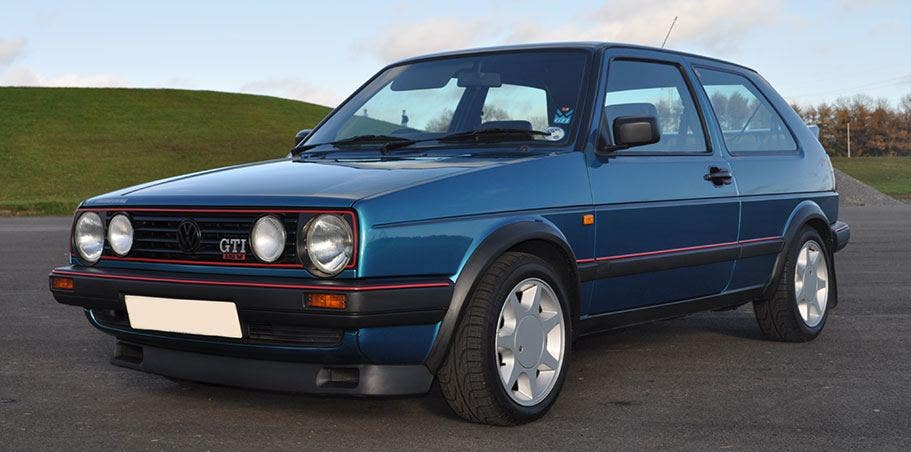

The GTI was unveiled to the general public and motoring press at the September 1975 Frankfurt Motor Show, the car however wasn't available to buy until June 1976 due to the engineers insistence that the new GTI should satisfy the same levels of quality and reliability that every production VW adhered to, a commitment that almost certainly lead to the longevity of the GTI when compared to its peers such as the XR3, Astra GTE and Peugeot 205 GTI.
Available in any colour so long as it was Mars Red, or Diamond Metallic Silver, customers were offered the choice of Schwartz Black soon after launch. The GTI was first granted a UK audience in late 1976, at the London Motor Show, where VW stated that there would be no RHD version, citing technical reasons as the reason, however you could import a LHD one as special order if you so chose at a cost of £3,372.
A few companies within the UK were beginning to specialise in making their own GTI's using RHD 1500cc Golfs as the basis, notably GTI Engineering and Tim Stiles. Following relentless lobbying by the UK dealer network, VW finally offered a RHD version of the GTI in early 1979, something they probably should have done earlier, especially when you compare sales of the '78 LHD GTI at 22, vs. the '79 RHD GTI with over 1500 sold.
It was launched in the UK as a 1984 model year car, with the GTI available from day one. Specification for the GTI was pretty much unchanged until 1987 model year, aside from some wheel and minor exterior and interior trim changes. The 139bhp 16v engine (KR code) joined the 112bhp 8v GTi in August of 1986. In August of 1987 the MkII underwent its first major facelift, with the quarter lights removed from the front door glass and the mirrors moved further forward along the doors. The grille was also changed, from the 7-slat to the 5-slat, and the fuel injection system was updated, with the mechanical K-Jet set-up replaced with the fully-electronic Digifant system on the 8v GTi models.
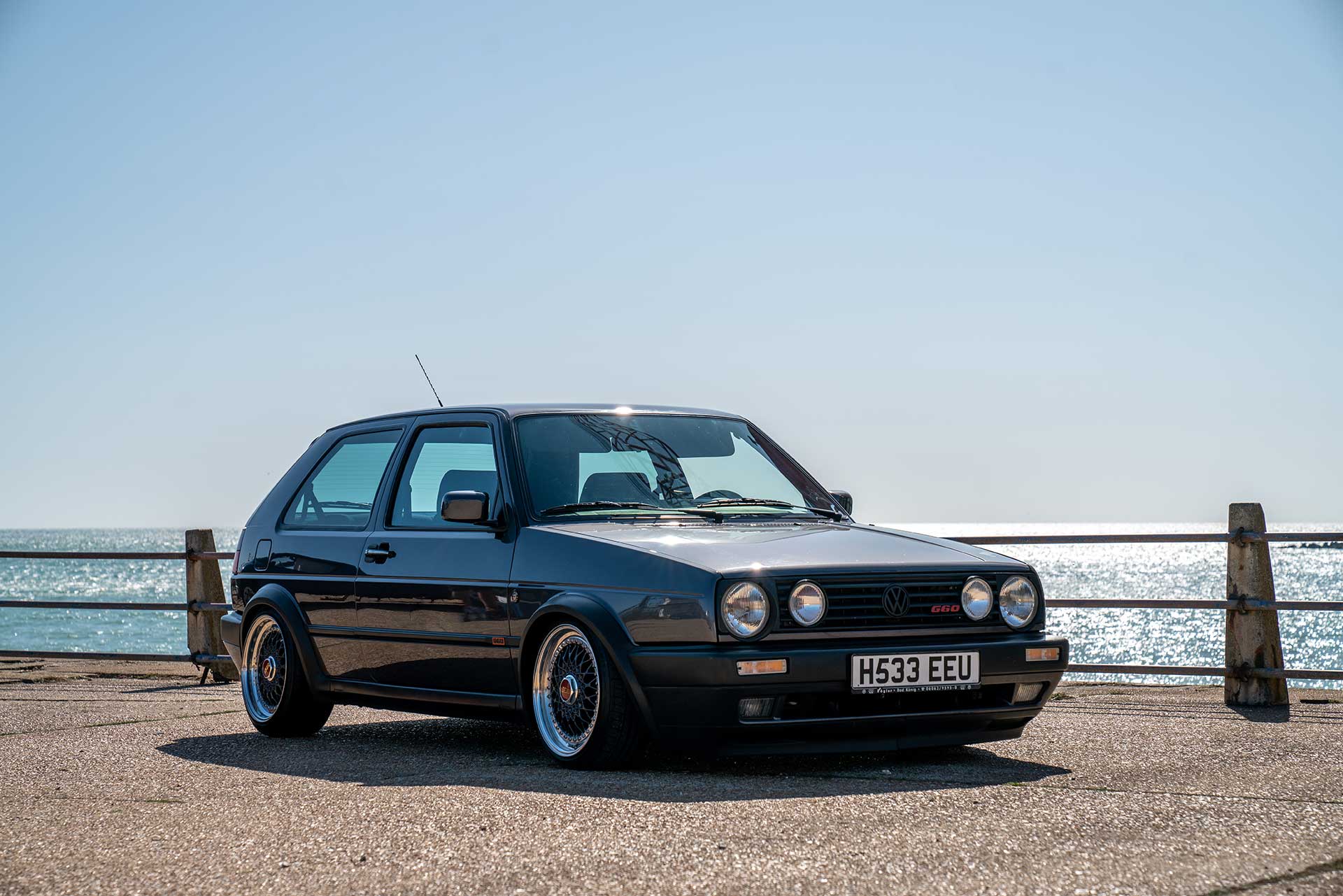
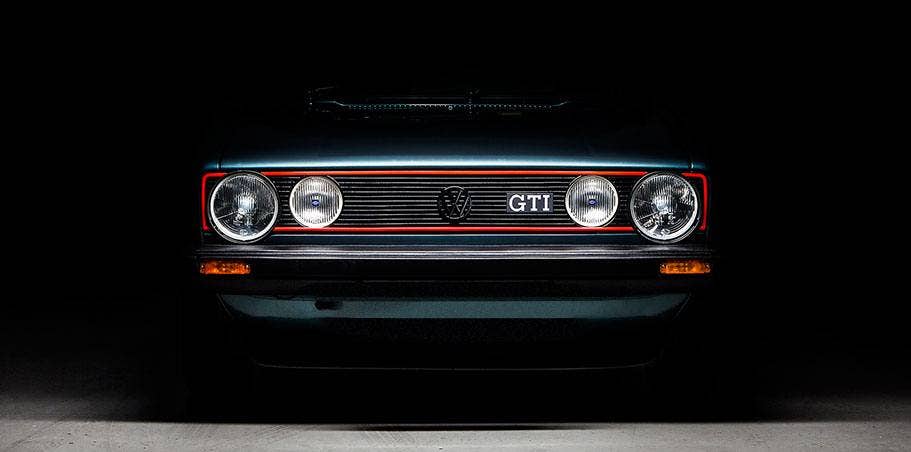
THE BIGGEST CHANGE CAME IN 1989
Big bumpers became an option across the range, and standard on GTi/G60 Models
August 1989 saw the change from Typ 19 to Typ 1G, the biggest change to the car externally being the availability of “Big-Bumpers” on the GTi and GL models, along with slimmer rub-strips, and re-modelled arch-trims which led into the full-length sill covers. Beneath the skin, the car had a new electrical system, known as Central Electric II (easily identified by the hazard switch moving from the dash to the steering column shroud). As with the later Rabbits, the Mk2 Golfs were produced in Westmoreland for the US domestic market, again with a noticeably different front end employing sealed unit square lamps, similarly the Westmoreland Mk2's had chunkier USDM impact bumpers.
The TAS factory was also drafted in to produce models for the then 6 Yugoslav republics, and produced more than 25,000 vehicles up until the outbreak of war in 1990. The vehicles offered by TAS were of an even lower spec than the C models available in the rest of Europe, and designated the Jx. October 1991 saw Mk2 production drawing to a close, so as before, VW released a series of run out models, all cars now featured tinted glass, electric front windows, 1/2 tinted rear light lenses and BBS RA alloy wheels, metallic paint was also a no-cost option. Shortly after in February 1992, VW officially dropped the Mk2 from its line-up.
COMFORT & PERFORMANCE
G60 Models came equipped with Recaro sports seats.
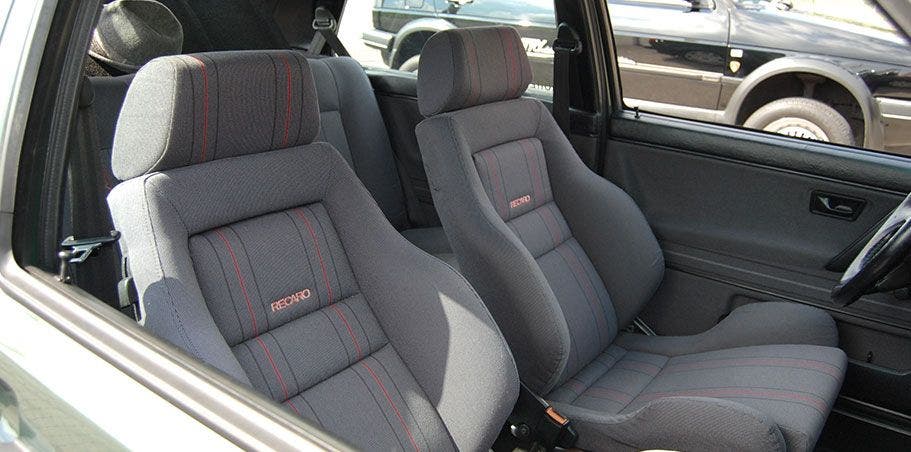

The early 90s saw the development of some new Interesting new models from VW, though sadly in the UK we were only going to see one of them (In an official sense at least), and all of them were only available in LHD. The G60 engine came about following research done by Volkswagen on their 1987 Polo GT G40 project, a 1300cc supercharged pocket rocket capable of hitting 120+mph from the box. Based on the EA111 series motor (essentially the 1781cc 8v motor) by the time VW had finished modifying it bore little resemblance to the original 8v GTI lump, pretty much every part being different. The "G" was used to describe the shape of the superchargers scrolls, and the 60 relates to the inlet size of the 'charger (60mm).
Initially released in the Passat B3, the engine was then fitted into the Mk2, thus creating the Mk2 GTI G60. The Mk2 GTI G60 was for the most part very similar to the GTI 16v of the day, but featured a few structural difference invisible from the outside, the windscreen was bonded in as opposed to relying on a rubber seal, this increased the rigidity of the shell, also the tunnel running through the centre of the car was larger, and that of the Golf Syncro (the 4x4 Golf), a stronger shell in itself, and was to make life a bit easier for some of the other G60 models to come, in this instance though the boot-floor was still that of the FWD car.
The G60 was available as a number of special editions. The Edition One (which was also available in 8v and 16v versions) which was available in Dark Burgundy Pearl Effect (also known as Aubergine), Pearl Grey or Brilliant Black Metallic. It featured; a sticker on the bonnet, "Wolfsburg Edition" plaques replacing the side repeaters, colour coded mirrors, wider arch trims (on the G60) BBS RM012 two piece split rim wheels, 1/2 tint rear lenses, white front lenses, black VW roundel on the front, black VW roundel on the back, leather gear knob and steering wheel, and a one-off Interior In blue, with matching carpet, door cards, and seats (electric Recaros on the G60). The 3 door models also featured Chromalux glass, on the rear 3 windows which was darker, and had a Siglachrome coating lending It an almost mirror-like finish.
The G60 was available as a number of special editions. The Edition One (which was also available in 8v and 16v versions) which was available in Dark Burgundy Pearl Effect (also known as Aubergine), Pearl Grey or Brilliant Black Metallic. It featured; a sticker on the bonnet, "Wolfsburg Edition" plaques replacing the side repeaters, colour coded mirrors, wider arch trims (on the G60) BBS RM012 two piece split rim wheels, 1/2 tint rear lenses, white front lenses, black VW roundel on the front, black VW roundel on the back, leather gear knob and steering wheel, and a one-off Interior In blue, with matching carpet, door cards, and seats (electric Recaro's on the G60). The 3 door models also featured Chromalux glass, on the rear 3 windows which was darker, and had a Siglachrome coating lending It an almost mirror-like finish.
The Fire and Ice G60 was offered again across a wide range of engines, including a 1800cc Turbo Diesel and of course the G60, and had been created by VW in honour of the 1990 film "Fire, Ice and Dynamite" which starred Roger Moore and Simon Shepherd. Overall the car was similar looking to the standard GTI, but was painted a unique shade of "Dark Violet Pearl" and adorned with suitably garish pink and purple decals to the C pillars. However it wasn't until you got into the Fire and Ice that the real impact was to be had, The interior was a mix of Blue and Purple upholstery, with huge embroidered logos on the backrest of each seat, certainly an acquired taste.
The final limited edition variant of the FWD G60 was the Edition Blue, only available as a G60 in Austria and Switzerland (the domestic market only got the PF code engine) the Edition Blue as the name suggests was Blue in colour (Moonlight Blue Pearl Effect) with matching leather interior, it also featured wider G60 arch trims, BBS RM012 2 piece split rim wheels, the GTI side plaques were replaced with "Edition Blue" plaques, colour coded mirrors, 1/2 tint rear lenses, a 3 spoke leather trimmed steering wheel, and leather handbrake and gear knob.
HOMOLOGATION SPECIAL
The G60 Rallye was the result of VW Motorsport decided to create a Group A rally car.
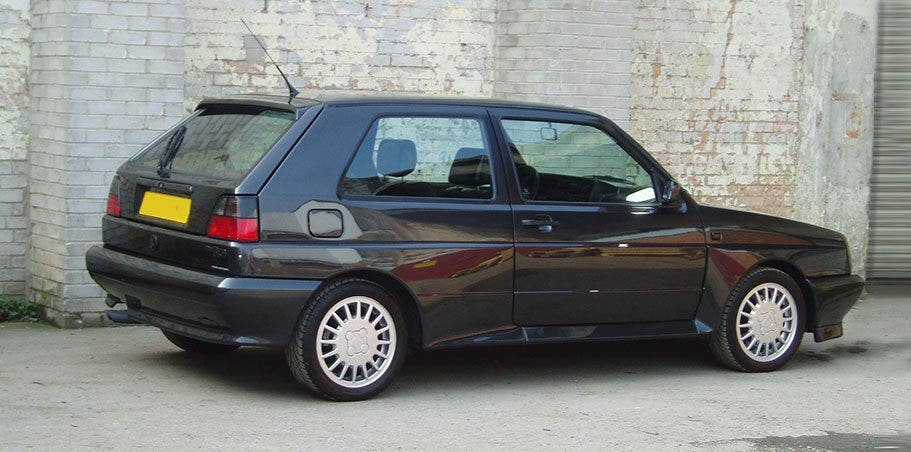

The Rallye Golf was as its name would suggest, VWs 4x4 Rally special, built by VW Motorsport in Belgium, it utilized a US spec body shell, a syncro drive train, pioneered by VW on the 1986 Golf Syncro and a slightly different variant of the G60 1781cc PG motor, this was due to the FIA rally regulations enforces rules on force induced cars, and the multiplier effect of the Supercharger on the engine capacity, as a result the new engine was coded 1H and was 1763cc, otherwise nigh on identical to the PG. The same couldn't be said for the Rallye's looks, big Audi Quattro style box arches had been grafted on, resulting in new bumpers, which in turn led to the Rallye's distinctive front end, featuring 2 rectangular "projector" style DE lenses as opposed to the familiar "twin-rounds" of the GTI. The Rallye's motorsport career was effectively stopped before it was started when the FIA introduced rules that effectively rendered the VW completely uncompetitive.
During the Rallye's short motorsport life it wasn't unheard of for the VW Motorsport technicians to have to replace the supercharger after every stage completed. This lead to VW having 5000 cars (the homologation requirements) sat around with no Rally Teams wanting to buy them, so they set about marketing them as road cars. In Germany you could spec a Rallye Golf exactly to your requirements, with the base car coming no better equipped internally than a stock GTI, save for the 1/2 leather seat and steering wheel, but for the 70 official UK models it was a different story.
The Rallye Golf was an expensive car back in the day, with a £20,000 price tag (similar to that of a reasonably high spec BMW 5 series) and an 8v GTI could be had for little over £10,000, VW needed to do something to sell the Rallye on its luxury credentials and not just its performance (which somewhat embarrassingly was slower than a GTI 16v of the same era), so they did what they knew best, and ticked all the option boxes, the official UK car was named the Rallye Golf SE, though officially imported, it was still only available as a LHD. Plans to sell the Rallye golf in the US were never followed up, but it is believed that a couple of prototype cars were made.
VW also released a G60 Syncro which was a combination of both the Rallye and the FWD G60, utilizing the syncro 4x4 system from the Rallye, but in a stock G60 shell, with the addition of the syncro shallow boot floor. One of the rarest G60s available.
The Golf Limited was a VW Motorsport-built special, with 71 being made, 69 of which were 5 doors - they featured a 210bhp 16v G60 motor (3G code), BBS RM split-rim wheels, Syncro 4wd, USDM bumpers, single lamp blue trimmed grilles, tinted Hella tail-lamps and exclusive VW Motorsport badging, they were available in one colour only, Black Metallic. Perhaps unsurprisingly, given their exceptional spec, they were originally built for VAG Executives. This astonishingly capable car was capable of hitting 0-60mph in a little over 6 seconds then heading on towards a top speed of nearly 155mph.
THE ODDEST MK2 GOLF CREATED?
The cross country Mk2 Golf Country.
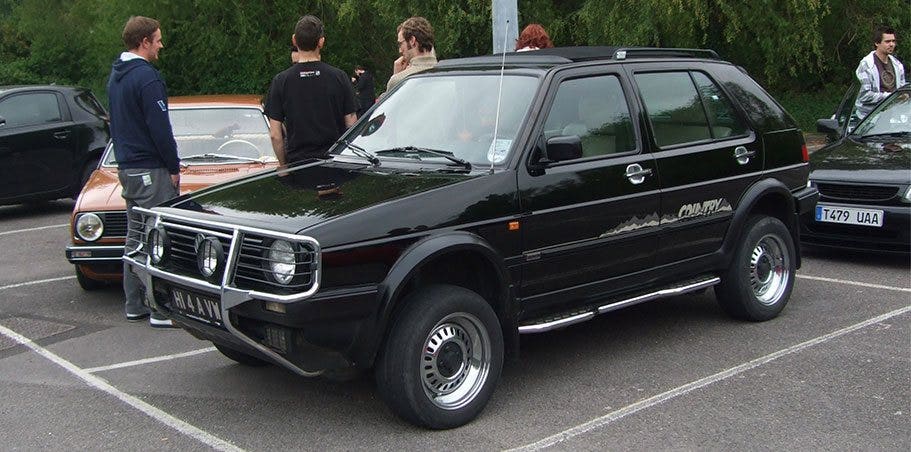

This leaves possibly the oddest Mk2 Golf of all, the Golf Country, built by Steyr-Daimler-Puch, each car started life as a stock 4 door Golf CL Syncro, with the body raised around 120mm, the engine and gearbox lowered, the car was very popular with customers in the Alpine regions. Externally the car featured bull bars, and a hinged spare wheel carrier mounted on the rear of the car.
The Countrys were usually fitted with a re-tuned version of the Digifant 8v GTi unit. There was a special edition "Chrome Edition" Country available which featured chrome bull bars, chromalux glass, and chromed "CalMaster" two piece steel wheels.
PUTTING THE BOOT IN
The Mk2 Jetta
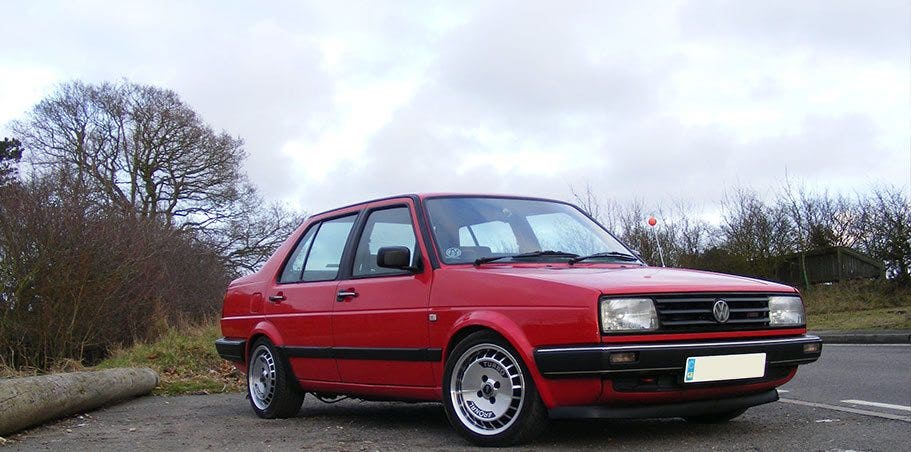

The Mk2 Jetta was VW's longest running Jetta model, unlike the Mk1 Jetta, which could almost be seen as an afterthought by VW, the Mk2 had always been planned for. Launched in 1985 in the US, the Jetta quickly secured the title of best selling European car in the American market, and was outselling the Mk2 Golf at a rate of 2 to 1. Unlike the Golf, production of the Jetta remained in Wolfsburg.
Overall the new Jetta was a more refined car, with room for 5 as opposed to the 4 of the Mk1, and moves had been made to reduce vibration transmitted through the engine mounts. One of the strangest accolades afforded to the 2nd generation Jetta was that of "Car of the year" as voted for by the North American Farmers Journal. Production of the Jetta continued to until 1992, when it was replaced by the Vento in Europe, and the Jetta III in the US.




 Beetle
Beetle
 Type 2 Bay
Type 2 Bay
 Type 2 Split
Type 2 Split
 Type 25
Type 25
 Transporter T4
Transporter T4
 Transporter T5
Transporter T5
 Golf Mk1
Golf Mk1
 Golf Mk2
Golf Mk2


 911
911
 996
996
 997
997
 986 Boxster
986 Boxster
 987 Boxster
987 Boxster
 912
912
 944
944
 924
924


 Defender
Defender
 Discovery Series 1
Discovery Series 1
 Discovery 2
Discovery 2
 Series 1, 2 & 3
Series 1, 2 & 3
 Freelander
Freelander
 Freelander 2
Freelander 2




